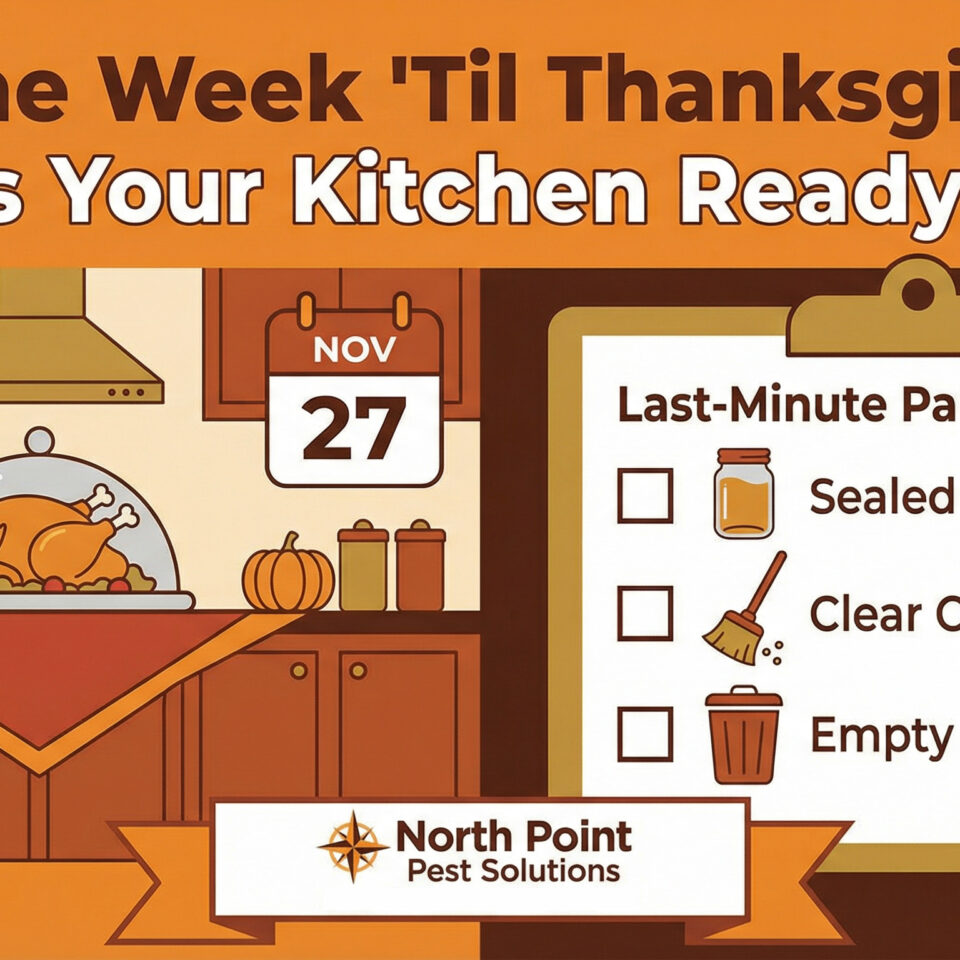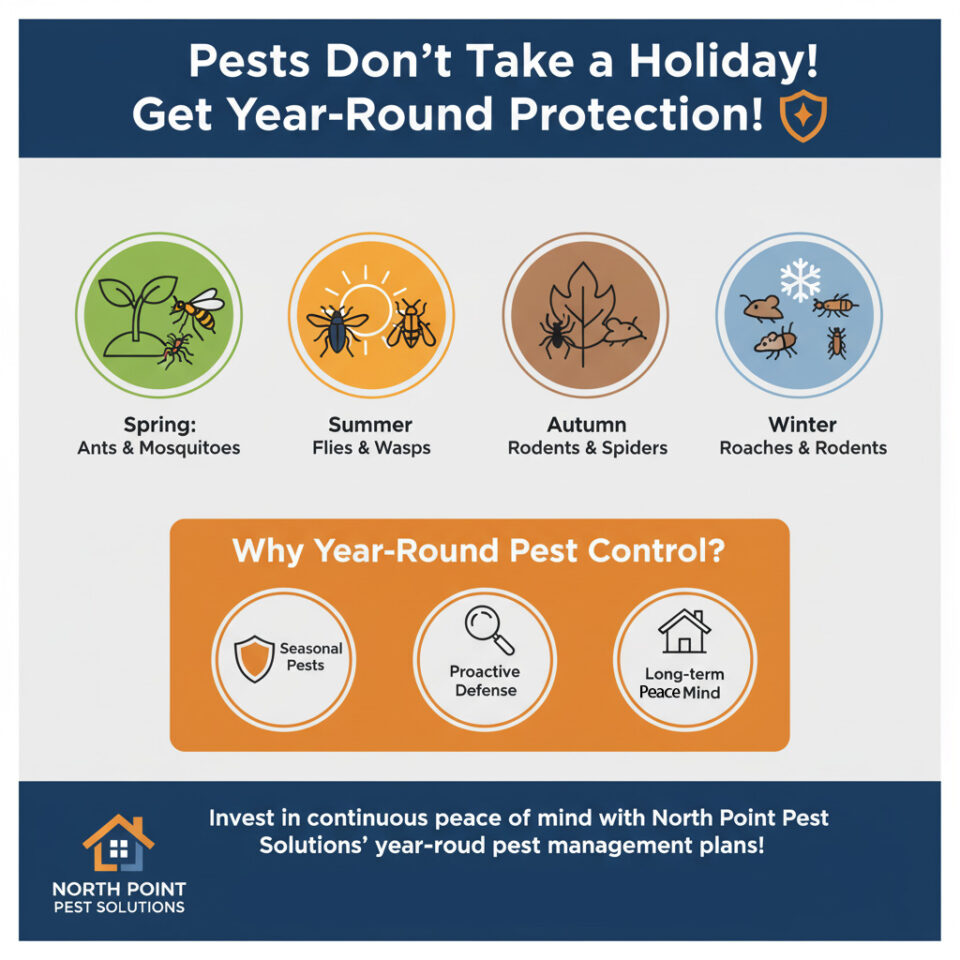Living in the beautiful North Bay region comes with many perks – stunning landscapes, vibrant communities, and a generally pleasant climate. However, that lovely climate is also attractive to a variety of common household pests. From ants marching into your kitchen to rodents seeking shelter, keeping your home pest-free is a year-round endeavor. Fortunately, with some proactive measures, you can significantly reduce the chances of an unwelcome critter invasion. Here are some great ways to pest-proof your North Bay home:
Seal the Deal: Your First Line of Defense is a Secure Exterior
Pests are opportunistic, and even the smallest crack or opening can be an invitation into your home. A thorough inspection and sealing of your home’s exterior is crucial.
- Inspect and Seal Cracks and Gaps: Carefully examine your home’s foundation, walls, and roofline for any cracks, crevices, or holes. Pay close attention to areas where utility pipes, wires, and vents enter your home. Use caulk, steel wool (which rodents can’t chew through), or expanding foam sealant for smaller gaps. For larger holes, you might need to use cement, mortar, or hardware cloth.
- Check Doors and Windows: Ensure that your doors and windows have tight-fitting seals. Replace worn weather stripping and door sweeps. Repair or replace any damaged screens on windows and doors, as these are key entry points for flying insects and even some crawling pests. Consider using screen mesh with at least 200 holes per square inch.
- Secure Vents and Chimneys: Cover attic vents, chimney openings, and any other ventilation points with fine mesh screening to prevent birds, rodents, and insects from entering.
- Garage Door Defense: Don’t forget the garage! Ensure the garage door seals completely at the bottom and sides. Rodents and insects can easily slip under a poorly sealed garage door.
Inside Job: Maintaining a Less Pest-Friendly Interior
Once you’ve fortified your home’s exterior, focus on making the inside environment less appealing to pests.
- Keep it Clean: This is fundamental. Regularly vacuum, sweep, and mop floors to remove crumbs and debris. Wipe down countertops and clean up spills immediately. Pests like cockroaches and ants are drawn to food residue.
- Secure Food Sources: Store food, including pet food, in airtight containers. Don’t leave food out on counters for extended periods. Regularly clean out your pantry, checking for spills or expired items that might attract pests.
- Manage Trash Effectively: Use trash cans with tight-fitting lids both indoors and outdoors. Empty indoor trash cans regularly, especially those in the kitchen. Clean your trash cans periodically to remove any food residue that could attract pests like flies and rodents.
- Eliminate Clutter: Pests love hiding places. Reduce clutter in your home, especially in storage areas like basements, attics, and closets. Store items in sealed plastic bins rather than cardboard boxes, as cardboard can attract and harbor pests like silverfish and cockroaches.
- Address Moisture Issues: Many pests, including termites, ants, and cockroaches, are attracted to moisture. Fix leaky faucets, pipes, and appliances promptly. Ensure good ventilation in bathrooms, kitchens, and crawl spaces to reduce humidity. Consider using a dehumidifier in damp areas.
The Great Outdoors: Yard and Garden Pest Prevention
Your yard can be the first point of contact for pests. Maintaining it properly can significantly deter them from heading towards your house.
- Trim Landscaping: Keep trees, shrubs, and other vegetation trimmed back from your home’s foundation and roofline. Overhanging branches can provide a bridge for pests like ants and rodents to access your house. Aim for at least a foot of clearance.
- Maintain Your Lawn: Mow your lawn regularly and remove leaf litter, grass clippings, and other yard debris where pests can hide and breed.
- Proper Wood Storage: If you have firewood, store it at least 20 feet away from your home and elevate it off the ground. Firewood piles can attract termites, ants, and rodents.
- Eliminate Standing Water: Mosquitoes breed in standing water. Regularly empty water from flowerpots, birdbaths, old tires, and any other containers in your yard. Ensure your gutters are clean and draining properly to prevent water from pooling near your foundation.
- Consider Pest-Repellent Plants: Some plants, like lavender, mint, rosemary, and chrysanthemums, are known to naturally deter certain insects.
Seasonal Pest Vigilance in the North Bay
Pest activity can fluctuate with the seasons in the North Bay area:
- Spring: As temperatures warm up, ants, termites (especially swarming), spiders, mosquitoes, and rodents become more active. This is a critical time for reinforcing your pest-proofing measures.
- Summer: Stinging insects like wasps and yellow jackets can be more prevalent. Mosquito and fly populations are often at their peak. Continue to be diligent about eliminating standing water and keeping food sources secure.
- Fall: Rodents, spiders, and cockroaches may seek shelter indoors as temperatures begin to drop. This is a good time to double-check your home’s seals and ensure there are no easy entry points.
- Winter: While some pest activity may decrease, rodents will actively seek warmth and food indoors. Termites can remain active year-round in California’s climate.
When to Call the Professionals
If you suspect you have a pest problem that’s beyond your ability to manage, don’t hesitate to contact a licensed and reputable North Bay pest control professional. They can identify the specific pests, determine the extent of the infestation, and implement targeted and safe treatment solutions.
By taking a proactive and consistent approach to pest-proofing, North Bay homeowners can enjoy their beautiful surroundings with greater peace of mind, knowing their homes are well-defended against unwanted guests.






